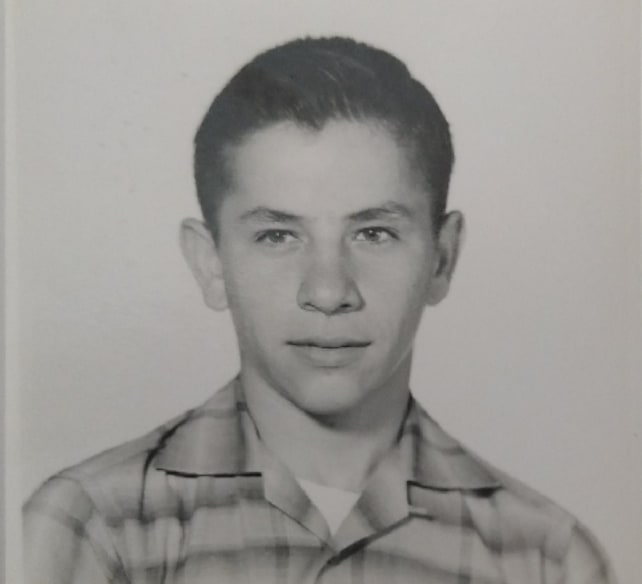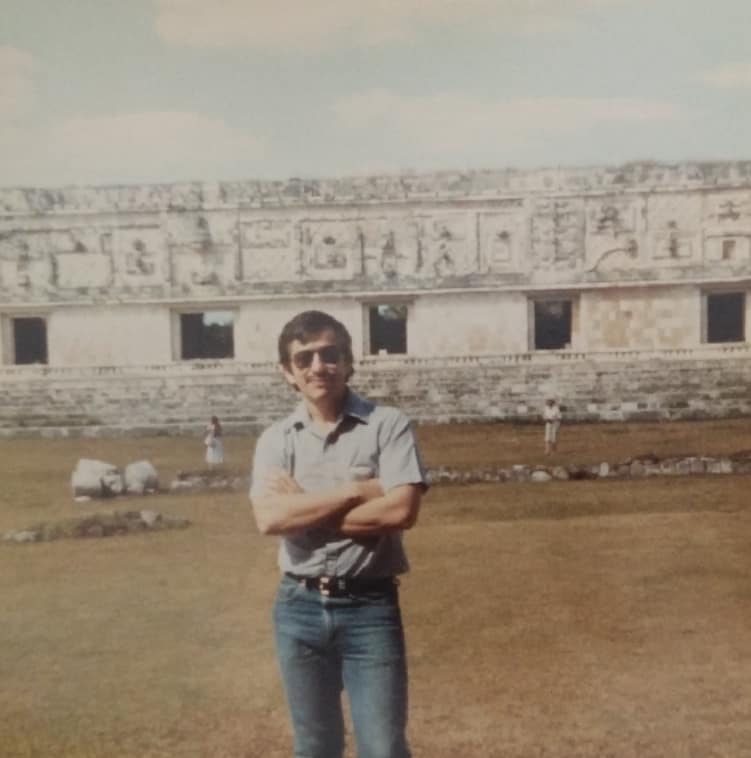Carlos Arce identifies with the lyrics of his favorite song “No Soy de Aquí, Ni Soy de Allá”, “I’m not from here and I’m not from there.” Born in Mexico, he moved to the US at an early age, and returned to his homeland only recently, in his 80s. He chose to settle in historic San Miguel de Allende, where he first came as a young man in the 1960s.
After achieving great success in the US, he chose to re-invent himself and invest his time and money in Mexico: acquiring a hotel and coffee shop, and playing an active role in the community, serving on the board of the local bilingual library.

Carlos was an accomplished academic researcher and entrepreneur. He is also the proud grandfather of seven, all pursuing their individual visions: from a musician, an audio engineer, a medical student, an AI engineer to a fashion designer, scattered across the U.S., Canada and France.
“My family reunions today represent many identities; Mexican, Puerto Rican, Chinese, Japanese, Korean, Filipino, Native American, African American, and all sorts of European and northern African origins,” Carlos says.
Carlos was aware that his parents and grandparents hailed from the western mountains of Chihuahua, the Sierra Tarahumara, but he and his brother have made discoveries about his deeper origins which span seven generations in this region of Indigenous peoples, goat and cattle farmers, and miners, likely drawn to this area since the late 17th century.
Carlos’s grandparents split their time between New Mexico and Chihuahua in the early 20th century, when the border was more porous. His family embraced cross-cultural life between the two countries. His father Francisco lived in the U.S. during the Great Depression before returning to Mexico, marrying, and then rejoining his brother José in California in 1954, when Carlos was 13, and his younger brother was six years old.
These years were spent in the Sacramento valley, where his father and uncle worked hard in the rice fields, gaining trust and respect from their employer which allowed the family to purchase a first home.
At the small catholic school, where the nuns had no experience with immigrants, Carlos was placed in a different grade each week, all the way up to 7th, which he now remembers with amusement as the chairs got bigger by the week! His schooling in Chihuahua had been excellent, so he aced all the subjects, foreshadowing a bright academic trajectory ahead.
With the 1957 Soviet launch of Sputnik, the first artificial Earth satellite, the space race began; the U.S. turned its focus on students, like Carlos, with strong math and science skills. Fortunately for Carlos, he had the luck of being mentored by Charles Lindquist, a Swedish-American math and physics teacher, who made Carlos his teaching assistant. Lindquist put Carlos forward for Berkeley, MIT, Stanford, and Caltech and he earned merit scholarships to all of them.
He chose Berkeley because it was the closest to home.
Carlos remembers when he started, he developed a class schedule that would keep him in the class from 9 a.m. – 3 p.m. every single day, five days a week, having no clue that he was only supposed to take up to 15 hours of classes per week. The faculty advisor didn’t even lift his head when he looked at Carlos’s schedule and threw it back at him, but a fellow student he befriended told him a secret that would transform his college career: if a signature was scribbled on his class card, no one would notice. Carlos could design his own class card and therefore, create his own schedule!

During these college years Carlos became an avid cyclist, road-tripping from Berkeley to Vancouver, Canada. In 1963, he bought a motorcycle and went on his first long ride down to South America through Mexico, stopping in San Miguel de Allende for a month.
Carlos’s motorcycle journey in South America lasted for two months He loaded his bike on the boat at the Panama Canal heading to Turbo, Colombia, a port city that lies near the southeastern tip of the Darién gap, 340 km north of Medellín.
It was on this grand and risky adventure that he truly grew to appreciate diversity of race and class. He had a natural passion for observing, asking questions and most of all, for feeling at home wherever he went.
Due to his scientific bent and social commitment, he shifted from engineering and physics to eventually graduate with a dual major in anthropology and math in his almost seven years as an undergrad. He then became a committed ethnographic and social researcher, and was able to discover the country he loved and was most curious about; his own, Mexico; its people, and their dispersal.
During those college years he was inspired by two professors who were pioneering quantitative anthropology, examining massive quantities of behavioral data and parsing it into separate components around culture, folklore, ethnic relations, and more – essentially building affinity models to track how culture and cultural perceptions evolve.
He started his career after completing a PhD in 1974, working at the Survey Research Center in Ann Arbor, Michigan, and in 1984 he started up his own survey research company. He met his wife Johanna, who became his invaluable partner in both life and work.
His work centered primarily on quantitative research, asking “the difficult questions” and probing difficult topics, especially around intercultural differences and relations, delivering the insights his clients sought. After 25 years, Carlos and Johanna successfully sold their first company to a German firm, and a few years later, sold a second research company focused on GPS technology.
By this time, Carlos was in his 70s, and the call to pursue new horizons beckoned. He’d lived a full life in academia, and the adventure of successful entrepreneurship. His heart still belonged to Mexico, to San Miguel de Allende, the city he’d fallen in love with on his motorcycle journey in 1962. It was time for him to bring all that he had gained back to his homeland.
